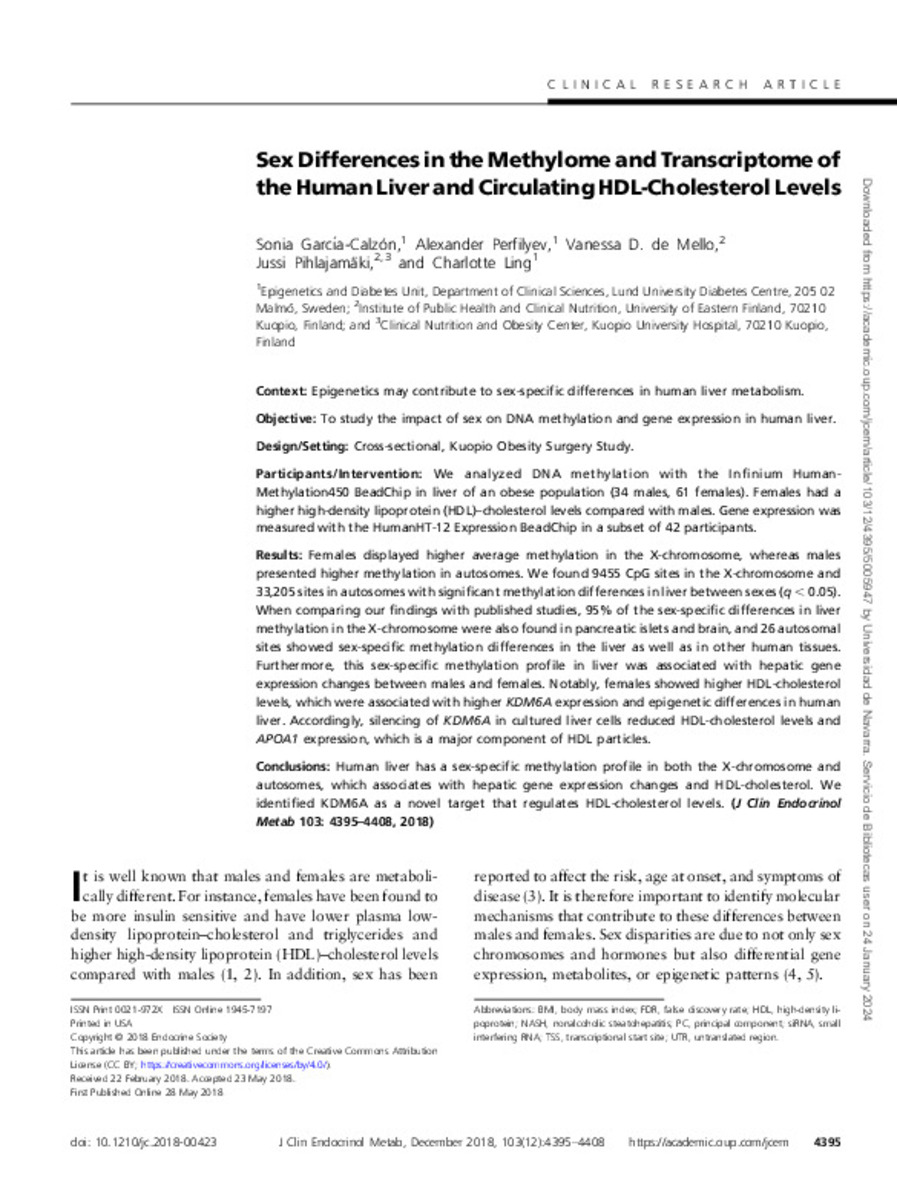Sex differences in the methylome and transcriptome of the human liver and circulating HDL-cholesterol levels
Keywords:
Materias Investigacion::Ciencias de la Salud
Sex differences
Liver
Cholesterol levels
Publisher:
Oxford University Press
Note:
This article has been published under the terms of the Creative Commons Attribution
License (CC BY; https://creativecommons.org/licenses/by/4.0/).
Citation:
Garcia-Calzon, S. (Sonia); Perfilyev, A. (Alexander); Mello, V.D. (Vanessa D.) de; et al. "Sex differences in the methylome and transcriptome of the human liver and circulating HDL-cholesterol levels". The Journal of Clinical Endocrinology & Metabolism. 103 (12), 2018, 4395 - 4408
Statistics and impact
0 citas en

0 citas en

Items in Dadun are protected by copyright, with all rights reserved, unless otherwise indicated.







